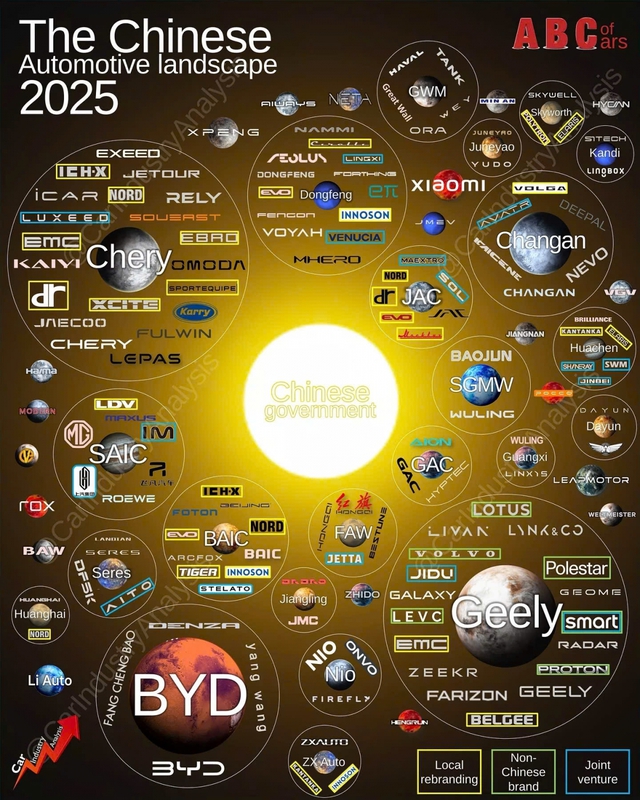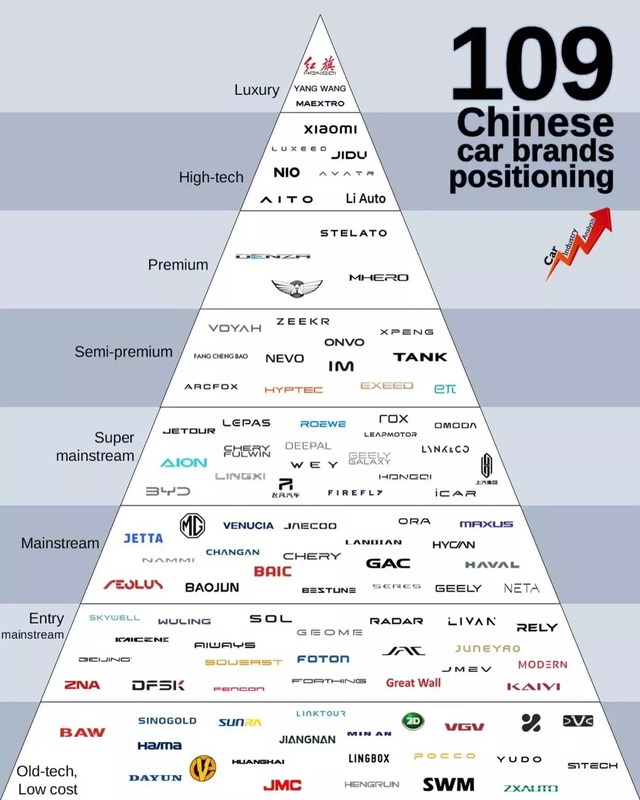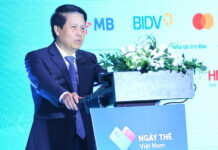China’s automotive market, boasting over a hundred brands and a complex ownership structure, is renowned as the most intricate in the world. Despite its fragmentation and tangled web of affiliations, the industry is, in reality, shaped and dominated by four powerhouse conglomerates, particularly in the global electric vehicle (EV) race.
According to analyst Felipe Munoz, the world’s largest automotive market is not a level playing field for its hundreds of brands but is instead controlled by four major players. Collectively, these four giants command a staggering 56% of the domestic market share.
The Big Four Conglomerates
At the heart of China’s automotive industry lies the “Big Four”: Geely, BYD, Chery, and Changan. These behemoths not only dominate over half of the domestic consumption market but are also pioneers in EV technology and global exports.

Overview of China’s Automotive Market in 2025
Notably, Chery and Changan are wholly state-owned enterprises, underscoring the government’s direct role in steering the industry’s development.
Geely: Stands out with the most diverse portfolio, encompassing both domestic brands (Zeekr, Lynk & Co) and international acquisitions (Volvo, Lotus, Polestar).
BYD: Maintains a lean structure yet leads in EV production, managing premium sub-brands like Denza, YangWang, and Fang Cheng Bao.
Chery & Changan: Both state-owned conglomerates with extensive sub-brand portfolios (Omoda, Jetour for Chery; Avatr, Deepal for Changan), solidifying their manufacturing dominance.
The Brand Positioning Battle
The complexity of China’s market is evident in its brand segmentation, forming a pyramid of 109 names, ranging from Ultra-Luxury (Hongqi, YangWang) to High-Tech (Nio, Xiaomi, Li Auto) and Affordable segments.

Brand Positioning Pyramid in China’s Automotive Market
Beyond the “Big Four,” other state-owned giants like SAIC (MG), BAIC, and Dongfeng remain pivotal, alongside a wave of independent startups (Nio, Xpeng, Li Auto, Xiaomi) driving technological innovation in AI and smart connectivity.
With such a vast array of brands, consolidation and mergers are inevitable in the near future. Smaller brands will likely fade away, while larger conglomerates will strengthen their portfolios. This optimization will streamline the market without diminishing its fierce competitiveness.
Backed by robust government support, substantial R&D investments, and ambitious export strategies, Chinese manufacturers are increasingly establishing themselves as the most influential force shaping the global automotive industry’s future.
The Ultimate Luxury on a Budget: China Introduces Mini Rolls-Royce and Maybach for the Style-Conscious and Cash-Strapped.
In recent years, Chinese automobiles have made significant strides in terms of quality, design, and technology. However, alongside these modern offerings, the automotive industry in China also plays host to some surprising and, at times, quirky creations. Case in point: the existence of miniaturized replicas of ultra-luxury vehicles like the Rolls-Royce Phantom and Mercedes-Maybach GLS, which are near-identical in design but incredibly reduced in size and price.






































